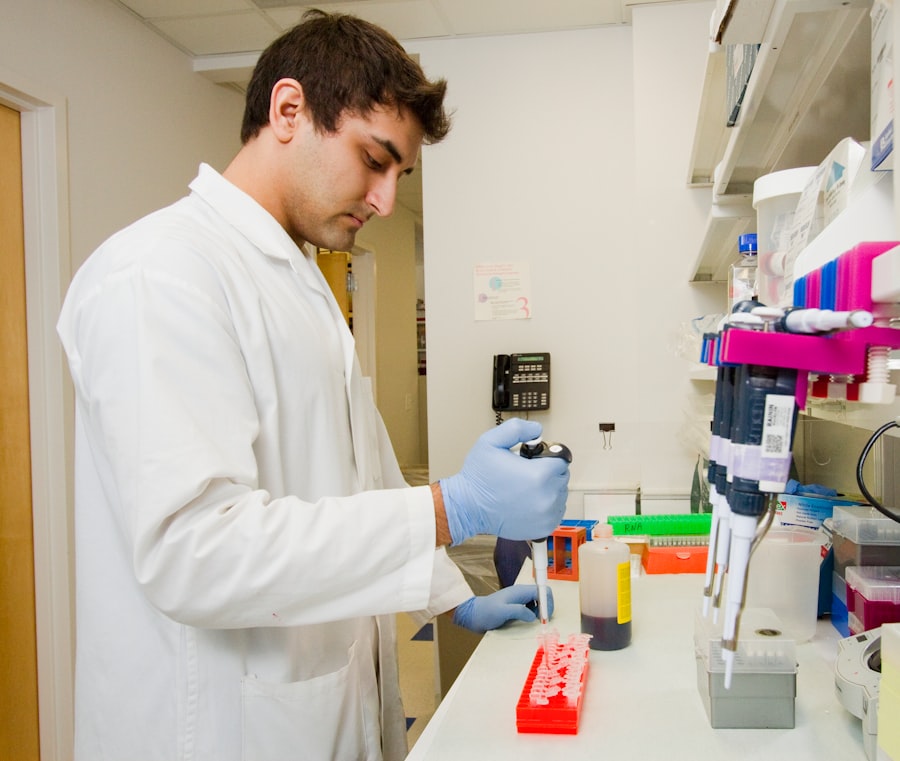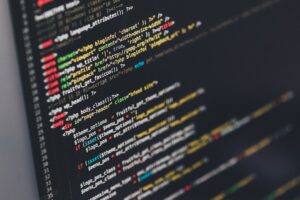A phlebotomist is a healthcare professional who specializes in the practice of drawing blood from patients for various medical purposes, including diagnostic testing, blood donations, and research. This role is critical in the healthcare system, as blood tests are essential for diagnosing a wide range of conditions, monitoring health status, and guiding treatment decisions.
Their expertise ensures that blood is collected safely and efficiently, minimizing discomfort for patients while adhering to strict safety protocols. In addition to technical skills, phlebotomists must possess strong interpersonal abilities. They often work directly with patients, requiring them to communicate effectively and provide reassurance during the blood collection process.
Phlebotomists may encounter patients who are anxious or fearful about needles, and their ability to create a calm environment can significantly impact the patient experience. Furthermore, phlebotomists play a vital role in maintaining the integrity of blood samples, ensuring that they are collected, labeled, and transported correctly to avoid contamination or misidentification.
Key Takeaways
- A phlebotomist is a healthcare professional who is trained to draw blood from patients for medical testing, transfusions, donations, or research purposes.
- Training and education requirements for phlebotomists typically include completing a phlebotomy program, obtaining certification, and gaining hands-on experience through internships or on-the-job training.
- The job duties and responsibilities of a phlebotomist include verifying patient information, preparing and sterilizing the puncture site, drawing blood, labeling and storing blood samples, and maintaining accurate patient records.
- Phlebotomists work in a variety of settings, including hospitals, clinics, blood donation centers, and diagnostic laboratories, where they interact with patients of all ages and medical conditions.
- To succeed as a phlebotomist, individuals need to possess strong communication skills, attention to detail, empathy, physical stamina, and the ability to work efficiently under pressure.
Training and Education Requirements for Phlebotomists
Training Programs and Coursework
Many community colleges and vocational schools offer certificate programs in phlebotomy that can be completed in a matter of months. These programs often include coursework in anatomy and physiology, medical terminology, infection control, and the legal aspects of blood collection.
Hands-on Experience and Certification
Additionally, students gain hands-on experience through supervised clinical practice, where they learn to perform venipunctures and capillary punctures on real patients under the guidance of experienced professionals. Certification from recognized organizations such as the National Phlebotomy Association (NPA) or the American Society for Clinical Pathology (ASCP) can enhance job prospects and demonstrate a commitment to professional standards.
Ongoing Education and Certification Requirements
Certification typically requires passing an exam that assesses knowledge of phlebotomy techniques, safety protocols, and patient care practices. Continuing education is also important in this field, as advancements in technology and changes in regulations necessitate ongoing training to ensure that phlebotomists remain current in their skills and knowledge.
Job Duties and Responsibilities of a Phlebotomist

The primary responsibility of a phlebotomist is to collect blood samples from patients for laboratory analysis. This process involves preparing the patient by explaining the procedure, ensuring they are comfortable, and obtaining informed consent. Phlebotomists must accurately identify patients using two forms of identification to prevent errors in sample collection.
Once the patient is prepared, the phlebotomist selects an appropriate site for venipuncture, cleans the area with an antiseptic solution, and uses sterile equipment to draw blood. After collection, they label the samples with pertinent information such as the patient’s name, date of birth, and time of collection. In addition to blood collection, phlebotomists are responsible for maintaining equipment and ensuring that all procedures comply with safety regulations. This includes properly disposing of needles and other biohazardous materials in accordance with established protocols.
Phlebotomists also play a role in inventory management by monitoring supplies such as needles, tubes, and antiseptics to ensure that they are adequately stocked. Furthermore, they may assist in training new staff or students in proper blood collection techniques and safety practices.
Work Environments for Phlebotomists
| Work Environment | Metrics |
|---|---|
| Hospitals | Number of phlebotomists employed, patient volume |
| Diagnostic Laboratories | Number of specimens processed, testing volume |
| Physician’s Offices | Number of patients seen, types of tests performed |
| Blood Donation Centers | Number of blood donors, blood collection volume |
Phlebotomists work in a variety of healthcare settings, each presenting unique challenges and opportunities. One of the most common environments is hospitals, where phlebotomists are often part of a larger laboratory team. In this setting, they may be required to collect samples from patients in different departments, including emergency rooms, outpatient clinics, and inpatient wards.
The fast-paced nature of hospital work demands that phlebotomists be adaptable and able to handle high volumes of patients while maintaining accuracy and professionalism. In addition to hospitals, phlebotomists can find employment in outpatient clinics, diagnostic laboratories, blood donation centers, and research facilities. Outpatient clinics typically have a more scheduled environment compared to hospitals, allowing phlebotomists to develop relationships with regular patients.
Blood donation centers focus on collecting blood from healthy donors and may involve community outreach efforts to encourage participation. Research facilities may require phlebotomists to collect samples for clinical trials or studies, often necessitating adherence to specific protocols related to sample handling and storage.
Skills and Qualities Needed to Succeed as a Phlebotomist
To excel as a phlebotomist, individuals must possess a combination of technical skills and personal qualities. Proficiency in venipuncture techniques is essential; this includes not only the ability to draw blood effectively but also the knowledge of anatomy to identify suitable veins for puncture. Attention to detail is crucial in ensuring that samples are collected accurately and labeled correctly.
Phlebotomists must also be familiar with various types of blood collection equipment and techniques for different patient populations, including pediatric and geriatric patients. Interpersonal skills are equally important in this profession. Phlebotomists often interact with patients who may be anxious or uncomfortable about the procedure.
The ability to communicate clearly and empathetically can help alleviate fears and build trust.
A commitment to ongoing education is also vital; as medical technology evolves and new procedures emerge, successful phlebotomists must stay informed about best practices in their field.
Career Outlook and Job Prospects for Phlebotomists

Increasing Demand for Diagnostic Testing
As the population ages and chronic diseases become more prevalent, the need for diagnostic testing continues to rise. According to the U.S. Bureau of Labor Statistics (BLS), employment for phlebotomists is projected to grow significantly over the next decade, outpacing many other occupations within the healthcare sector.
Factors Contributing to Job Growth
This growth is attributed not only to an expanding healthcare system but also to advancements in medical technology that require skilled professionals to perform blood collection procedures.
Enhancing Job Prospects
Job prospects for phlebotomists can vary by region and setting; urban areas may offer more opportunities due to higher concentrations of healthcare facilities. Additionally, those who hold certifications from recognized organizations may have an advantage in securing employment. Employers often seek candidates who demonstrate proficiency in both technical skills and patient care practices. Networking within professional organizations can also enhance job prospects by providing access to job listings and industry resources.
Advancement Opportunities for Phlebotomists
Phlebotomy can serve as a stepping stone for individuals seeking advancement within the healthcare field. Many phlebotomists choose to further their education by pursuing additional certifications or degrees in related areas such as nursing, medical laboratory technology, or healthcare administration. Transitioning into roles such as medical laboratory technician or registered nurse can provide greater responsibilities and higher earning potential.
Moreover, experienced phlebotomists may take on supervisory roles within their organizations or become trainers for new staff members. Some may choose to specialize in areas such as pediatric phlebotomy or geriatric care, which can enhance their expertise and marketability. Leadership positions within laboratory settings may also be available for those who demonstrate strong organizational skills and a commitment to quality patient care.
The Rewards of a Career as a Phlebotomist in Healthcare
A career as a phlebotomist offers numerous rewards beyond financial compensation. Many individuals find fulfillment in contributing directly to patient care by playing a vital role in diagnostic processes that can lead to improved health outcomes. The ability to make a positive impact on patients’ experiences during what can be a stressful time is often cited as one of the most rewarding aspects of this profession.
Additionally, phlebotomy provides opportunities for continuous learning and professional development. As medical practices evolve and new technologies emerge, phlebotomists have the chance to expand their skill sets through ongoing education and training programs. The flexibility of work environments—from hospitals to outpatient clinics—also allows phlebotomists to choose settings that align with their personal preferences and career goals.
Ultimately, the combination of meaningful work, opportunities for advancement, and diverse work environments makes phlebotomy an appealing career choice within the healthcare industry.
If you are interested in learning more about the field of phlebotomy and the job opportunities available, you may want to check out this article on strategies for effective reading of academic texts. This article discusses the importance of staying informed and up-to-date in your field, which is crucial for phlebotomists who need to constantly learn about new techniques and technologies in blood collection. By honing your reading skills, you can stay ahead of the curve and excel in your phlebotomy career.
FAQs
What is a phlebotomist?
A phlebotomist is a healthcare professional who is trained to draw blood from patients for various purposes, such as medical testing, blood donations, or transfusions.
What are the typical duties of a phlebotomist?
Typical duties of a phlebotomist include identifying patients, explaining the blood-drawing process, performing venipuncture, labeling and storing blood samples, and maintaining a clean and organized work area.
What are the educational requirements to become a phlebotomist?
Most phlebotomists complete a phlebotomy training program, which can range from a few months to a year in length. Some states also require phlebotomists to be certified, which typically involves passing an exam.
Where do phlebotomists work?
Phlebotomists can work in a variety of healthcare settings, including hospitals, clinics, blood donation centers, and diagnostic laboratories.
What is the job outlook for phlebotomists?
According to the U.S. Bureau of Labor Statistics, employment of phlebotomists is projected to grow 17 percent from 2019 to 2029, much faster than the average for all occupations.
What are the essential skills for a phlebotomist?
Essential skills for a phlebotomist include attention to detail, good communication and interpersonal skills, the ability to follow strict procedures, and a strong understanding of medical terminology and safety protocols.
























+ There are no comments
Add yours